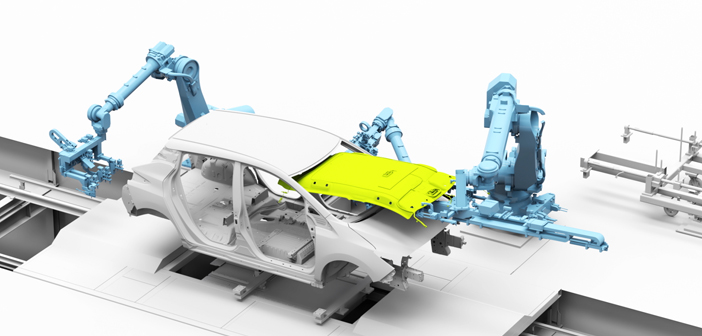Nissan is investing in a new method for installing automotive interior panels as part of a new suite of advanced technologies and equipment to upgrade its factories around the world. The innovations will help deliver a new generation of electrified and intelligent automobiles that embody the company’s Nissan Intelligent Mobility vision, while also making production operations more flexible, efficient and sustainable, Nissan says.
One of the issues to be addressed by Nissan’s investments is the use of robots to improve the workplace. The firm says that robots can now perform certain strenuous tasks efficiently, freeing workers to perform more valuable jobs elsewhere on the line. This also improves ergonomics, making factories easier places to work.
One example is the installation of a headliner on the inside of a car’s roof. Workers must enter each vehicle’s cabin to perform this physically demanding job. The task has become even harder as cars come with more connected features, adding to the number of devices in and around the headliners.
Nissan’s solution is to use robots to insert the headliner through the front of the vehicle and then fasten it. Sensors monitor changes in pressure and use a proprietary logic system to determine when the clips have snapped securely into place.
“We’re facing an unprecedented evolution in the capabilities of our vehicles,” said Hideyuki Sakamoto, Nissan’s executive vice president for manufacturing and supply chain management. “Our job is to make this evolution a reality by rethinking how we build cars. This will also mean shifting the efforts of our expert technicians from techniques they’ve already mastered to new, unexplored areas.”
Following an initial investment of around ¥33bn (US$302m) at the company’s Tochigi plant in Japan, with work to finish in 2020, the technologies will be rolled out across factories globally.



